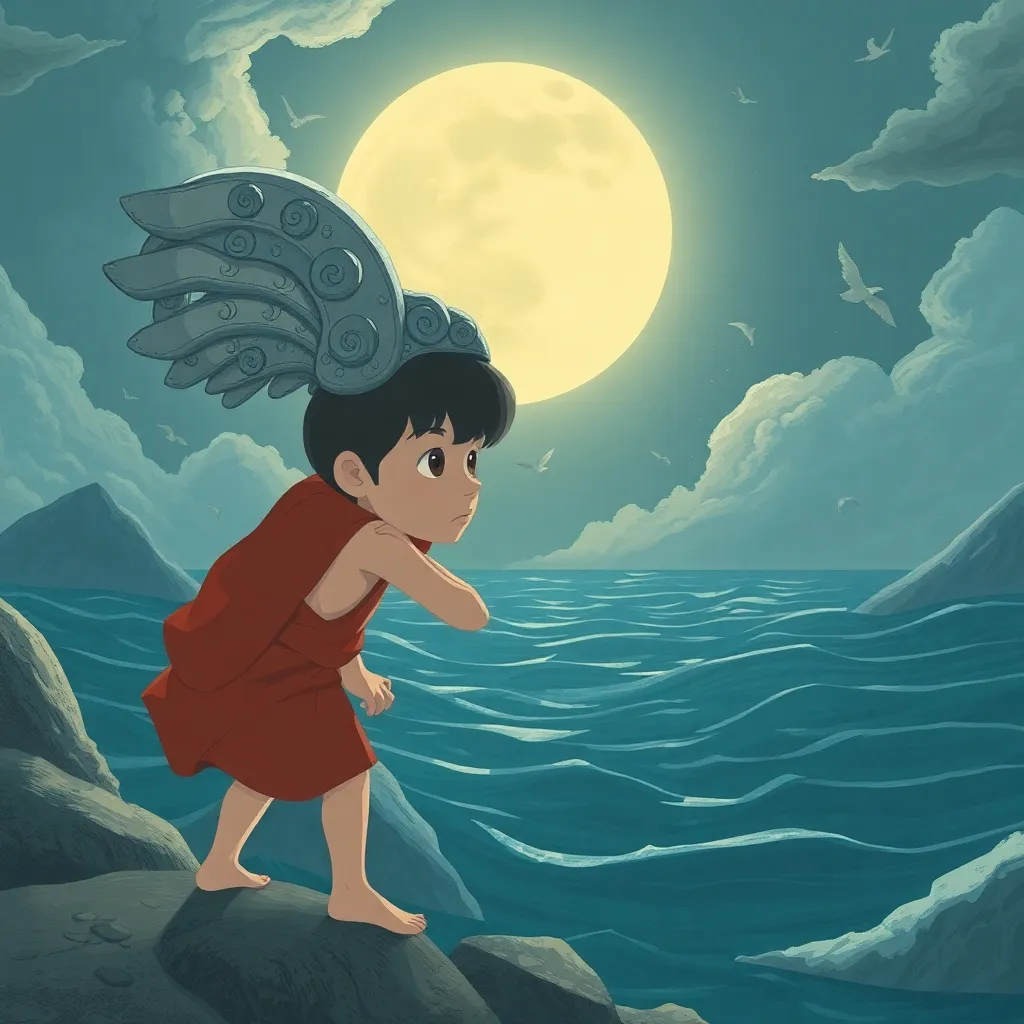The Cyclops in Children’s Stories: Lessons in Courage
I. Introduction
The myth of the Cyclops has captivated audiences for centuries, serving as a potent symbol within literature. This one-eyed giant, often portrayed as a fearsome creature, plays a significant role in various children’s stories, evolving from ancient myths into modern narratives. The Cyclops serves not only as a figure of terror but also as a catalyst for teaching vital lessons about courage and resilience.
By examining the Cyclops in these narratives, we can uncover the profound lessons of courage embodied in stories that engage young readers and encourage them to face their fears.
II. The Origins of the Cyclops Myth
The origins of the Cyclops myth can be traced back to ancient Greek mythology, where these creatures were depicted as wild and brutish beings, inhabiting remote islands and known for their remarkable strength.
A. Historical context of Cyclops in ancient mythology
In Homer’s “Odyssey,” the Cyclops Polyphemus famously encounters Odysseus and his men. This story highlights the themes of cunning versus brute strength, as Odysseus uses intellect to overcome the giant.
B. Evolution of the Cyclops character in children’s literature
Over time, the portrayal of the Cyclops has evolved in children’s literature, often being depicted as less menacing and more relatable, allowing young readers to engage with the character on a different level.
C. Key stories featuring the Cyclops
- Odysseus and Polyphemus: The classic tale of cleverness over strength.
- Modern adaptations: Stories that focus on the Cyclops as a misunderstood creature.
- Animated films and fairy tales that reimagine the Cyclops in a more humorous or whimsical light.
III. The Cyclops as a Symbol of Fear
The Cyclops embodies the concept of fear and the unknown, making it a powerful figure in children’s stories.
A. Representation of fear and the unknown
Children often perceive the Cyclops as a representation of their own fears—whether it’s fear of the dark, the unknown, or facing challenges. This creature’s intimidating appearance serves as a metaphor for the obstacles children face.
B. The Cyclops in children’s perceptions: a source of anxiety
The giant’s size and ferocity can evoke anxiety in young readers, but this fear is essential for the narrative, as it sets the stage for acts of bravery.
C. How fear serves as a catalyst for courage
Fear is not solely a negative experience; it can motivate characters to rise to the occasion, leading to personal growth and transformation.
IV. Courage in Confronting the Cyclops
Confronting the Cyclops often leads to significant character development in children’s stories.
A. Analysis of characters who face the Cyclops
Characters like Odysseus exemplify courage as they confront their fears head-on, utilizing their wits and bravery to overcome seemingly insurmountable challenges.
B. The journey of overcoming fear and adversity
The journey involves not just physical confrontation but also emotional resilience, as characters learn to trust themselves and their abilities.
C. Examples of bravery in popular children’s stories
- In “The Odyssey,” Odysseus’s cleverness in blinding Polyphemus represents a triumph of intellect over brute force.
- In modern adaptations, characters often befriend the Cyclops, showcasing bravery through understanding and compassion.
V. Lessons Learned: Courage and Resilience
Stories featuring the Cyclops impart valuable lessons about courage and resilience, essential qualities for personal growth.
A. The importance of courage in personal growth
Courage is highlighted as a pivotal theme, encouraging young readers to embrace their fears and transform them into strengths.
B. Resilience as a key theme in stories involving the Cyclops
The ability to bounce back from challenges is illustrated through characters who face the Cyclops, reinforcing the idea that resilience is crucial in overcoming adversity.
C. How these lessons resonate with young readers
Through the Cyclops narratives, children learn that bravery is not the absence of fear but the ability to face it, fostering a sense of empowerment.
VI. The Role of Friendship and Teamwork
Friendship and teamwork play significant roles in confronting the Cyclops, emphasizing the importance of collaboration.
A. The significance of allies in confronting the Cyclops
Allies provide support and encouragement, demonstrating that facing fears is often easier with the help of friends.
B. Examples of teamwork enhancing courage in stories
In various tales, groups of characters unite to confront the Cyclops, showcasing how teamwork can amplify individual bravery.
C. Lessons about collaboration and support
These stories teach children the value of working together, reinforcing that courage is often found in community.
VII. Modern Interpretations of the Cyclops
Contemporary adaptations of the Cyclops narrative reflect changing societal values and lessons.
A. Contemporary adaptations of the Cyclops narrative
Modern retellings often portray the Cyclops as a misunderstood character, allowing for exploration of themes like empathy and understanding.
B. How modern stories convey courage to today’s youth
These adaptations focus on courage not just in confrontation but in acceptance and friendship, resonating with today’s youth.
C. Reflection on societal changes and evolving lessons
As societal norms shift, the lessons derived from the Cyclops stories evolve, reflecting the need for courage in an increasingly complex world.
VIII. Conclusion
In conclusion, the Cyclops serves as a powerful lesson in courage within children’s literature. By facing this formidable creature, characters exemplify bravery that resonates with young readers, encouraging them to confront their fears.
The enduring relevance of the Cyclops in children’s stories highlights the importance of courage and resilience in personal growth, fostering a sense of empowerment in a new generation. Ultimately, storytelling remains a vital tool in nurturing courage and resilience in young minds, ensuring that the lessons of the Cyclops continue to inspire.




